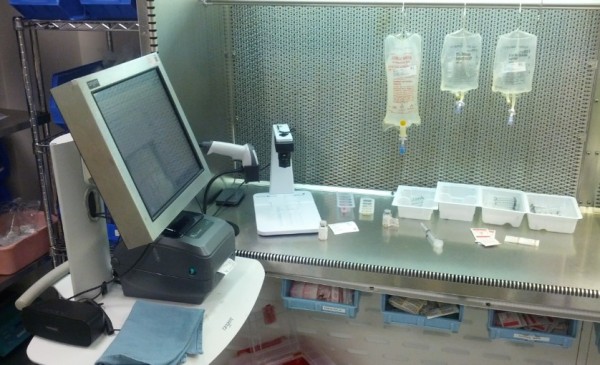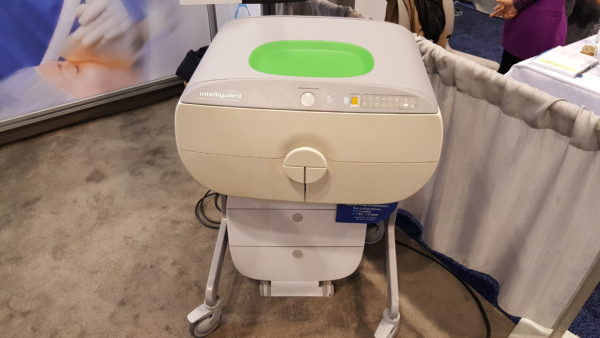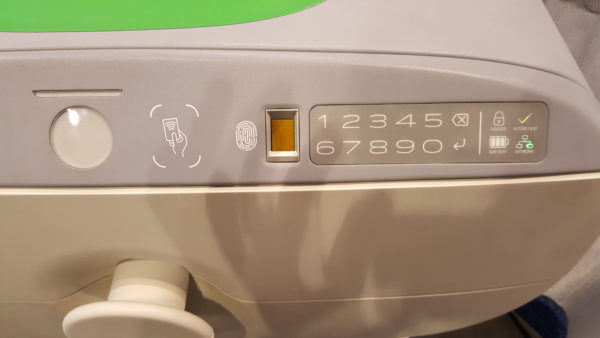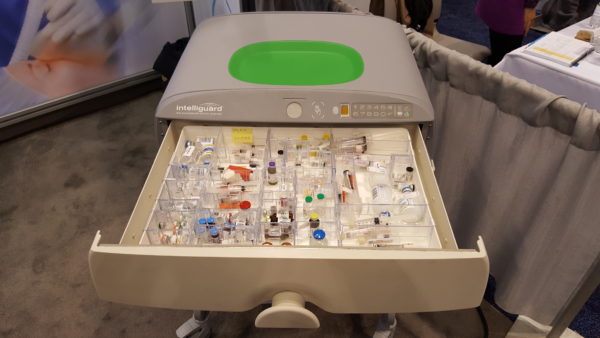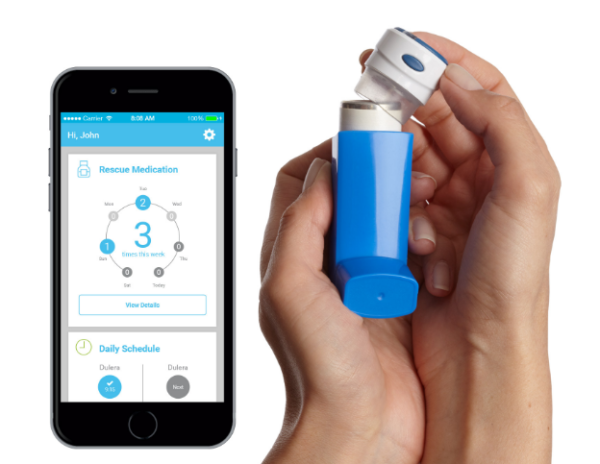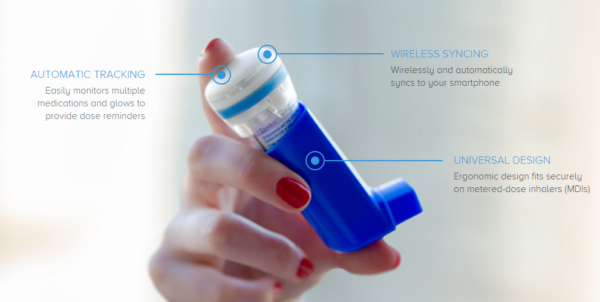I’ve been thinking a lot lately about the right way to go about putting new technology into a pharmacy. Making the decision to add technology doesn’t mean running out and purchasing a million-dollar piece of equipment and shoving it in a corner. It’s much more complicated than that. You must first lay the foundation for the work to be done.
Here are some things that I think should be considered before putting new technology in the pharmacy:
Give everyone fair warning of what you plan to do. No one likes to be surprised and people fear change. The best policy is to give people plenty of warning before making a change, which will allow them to get used to the idea. This will go a long way in gaining support for the project. Being aware of what’s coming is always preferable to being surprised by what has already been done.
Gauge user beliefs and feeling. It’s best to take the temperature of pharmacy personnel prior to getting started. Is it going to be an uphill battle? Are the pharmacists and technicians open to the idea of implementing new technology? Is the pharmacy morale where it should be? Does your department fear change?
The success of the implementation depends heavily on how well the department is warned and prepared for the change. People often see technology as a threat to control over their work environment, resulting in pushback. Helping staff understand what it is you hope to accomplish, how it will help them, and offering opportunities for staff to become vested in the project can go a long way in ensuring a successful implementation.
Get support/buy-in for the project. Support for any project is a must. Recruit from the top of the organization to the bottom. Failure to do so may result in a failure to launch. Whenever possible it is best to have support from the highest level of the organization, executive sponsor or someone from the board if you have one.  Influence matters. And don’t forget to involve all departments that will be impacted by the change, including nurses and physicians when appropriate.
Create a buzz. Create some excitement. Don’t act like the project is required, but rather a choice that’s going to make things better.  This is the power of advertising. We fall for it all the time, from cars to smartphones.
User involvement and participation. When individuals believe that the implementation of technology is relevant, they are much more likely to have a positive attitude toward the project. The best way to get individuals to believe in the technology is to get them involved and allow them to participate in all phases of the project. “Increasing user participation … enhances post-development user involvement and attitudeâ€.(1)
Involve as many people as possible as often as possible. When people are involved, it gives them a sense of ownership, making them vested in the project’s success. It also helps deal with negative vibes that may come from others.
Volunteers only. It is important that all participants be volunteers as mandated participation has been shown to be ineffective and potentially detrimental to the success of this type of project. (2)
Champions. Champions are the people that go above and beyond the general participant. Champions believe in the technology and the benefits it will provide. They can often have a contagious zeal about the project, and are sometimes referred to as “evangelistsâ€, or in extreme cases “zealotsâ€. Whatever you call them, you need them. When it comes to implementing new technology in the pharmacy, champions can be your best source of support and are often useful in putting a spotlight on the project in a positive way while swaying negative feelings about the project.Â
Finding Champions shouldn’t be too difficult. There are usually early adopters in every group. They will often present themselves while taking the initiative to learn more about the project without being asked.
Develop rules for participation. This is really quite simple. It is important that the rules for participation be laid out well in advance, and that each member of the team signs off on them. There should be no surprises for what’s expected from participants once the project is underway. The following rules are examples:
- Be willing and able to engage in the project
- Be willing to be positive about the project
- Be willing to work with others to advance the project
- Be willing to commit to attending meetings
- Be willing to commit to handling extra work, even if it means staying late or doing some reading at home in the evenings or on the weekends. I understand that no one wants to put in a bunch of unpaid overtime on these projects. However, on occasion, a little extra work needs may need to be done to keep things moving forward. One should enter into participation with the understanding that this could happen.
- Be willing be engage in every aspect of the project, not only the items that are assigned. It is vitally important that each participant has at least a basic understanding of the overall scope of the project and what each member of the team is assigned to do. Things happen. People get sick, quit their jobs, move to another state, and so on. Such unforeseen events should not completely derail the project timeline or goals.Â
Sway the naysayers. Every project has its opposition. As the saying goes, you can’t please everyone all the time. Unfortunately, naysayers tend to be the most vocal personalities in any group. They’re not afraid to say what’s on their mind; whether positive or negative. The downside is that outwardly negative comments about a project have a way of spreading like wildfire. They’re caustic and often seep into the minds of even the staunchest supporter without warning. And once planted, negative thoughts grow like a cancer.
Naysayers and their negative comments have their place. They often point out things that others fail to see, helping avoid pitfalls along the way. The trick is to use the information to your advantage and allow naysayers to offer their thoughts in an environment that won’t bring down the rest of the pharmacy. Give them space to vent, and then do your best to use the information to flip them. If you can show the naysayers in the group that you’re willing to listen to them and take their concerns seriously, you may be able to get them on your side. That’s a huge victory for any project. On the other hand, never force change on a naysayer. Forcing change or mandating them to join your side rarely works. It’s like dealing with a donkey, the harder you pull, the harder they resist.
Build a team with high potential for success. According to Harvard Business Review’s (HBR’s) 10 must Reads On Emotional Intelligence (3), the source of great success lies with teams that can achieve high levels of participation, cooperation, and collaboration among members.
Team members must be chosen carefully and meet three basic conditions:
- Mutual trust of one another
- Have a sense of group identity – a feeling that they belong and the project is worthwhile
- Have a sense of group efficiency – belief that the team can perform well and that the group is better than the individual members.
Collectively, HBR refers to this as the groups “emotional intelligence†(EI). And while the knowledge and experience among group members is important, EI may be more important still. Keep this in mind when you begin building the project team.
Chose a project leader. Being “the leader†is a burden that many well-qualified individuals shy away from. With that said, someone has to be in charge. Someone has to be given authority over the group. Someone has to be willing to make the tough decisions and hold people accountable.
Not everyone is cut out to be a leader. I am of the opinion that leaders are born, not made. You either have it or you don’t. I know because I’ve tried many times to lead and failed. It wasn’t for lack of knowledge or desire, but rather a lack of natural leadership and charisma. On the flipside, I’ve been around many people that just have “itâ€; “it†being a knack for getting people to follow them and do what they say, i.e. they’re natural born leaders.
What distinguishes good leaders from great leaders is “a group of five skills that enable the best leaders to maximize their own and their followers’ performance.†(3)
The five skills are:
- Empathy
- Motivation
- Self-regulation – controlling negative impulses
- Self-awareness – knowing strengths and weaknesses
- Social skill – being able to build a rapport with others to get desired results
Find a project manager. As ridiculous as this may sound, the project manager is an often overlooked position when discussing project teams. Let me go on record now as saying that a good project manager is absolutely vital to the success of any project; arguably the most vital consideration to the success of a project.
It is the job of the project manager to manage all aspects of the project, including the scope, the timeline, the cost, the quality, and the people. They apply their knowledge, skills, tools, and techniques to help projects be successful.
“The role of the project manager is that of an enabler. Her job is to help the team get the work completed, to “run interference†for them, to get scarce resources that they need, and to buffer them from outside forces that would disrupt the work.â€(4)
Things to consider when selecting a project manager:
- The person must have leadership qualities, have good self-management and time management skills, and be a taskmaster.
- The project manager cannot serve two masters. Individuals that serve as a project manager must not be required to do any of the actual work in the project. According to Lewis (4), “as team sizes increase, it becomes impossible to work and manage both[the work and the team], because you are constantly being pulled away from the work by the needs of your team membersâ€. Having project managers attempt to manage the project in addition to working on the project is a recipe for disaster.
- The person must have a proven track record. We all know people that can’t manage the paper piles in their office much less a multi-faceted project requiring meticulous attention to detail.
I encourage everyone involved in a large project to read a book or two on project management. Being a project manager is not as easy as it sounds and should be given the respect it deserves.
That’s it. Piece of cake. Go forth and build your implementation team.
—
- Vaughan PJ. Internal Report of Information Technology Services. University of Colorado at Boulder. 2000.
- Hunton, J.E. and Beeler, J.D., Effects of User Participation in Systems Development: A Longitudinal Field Experiment. MIS Quarterly, 21(4), 1997, pp. 359-388.
- Hbrʼs 10 Must Reads On Emotional Intelligence. 1st ed. Boston (Massachusetts): Harvard Business Review Press, 2015. Print.
- Lewis, James P. Fundamentals Of Project Management. New York: American Management Association, 2007. Print
